
OR
Rebuttal to Shyam Saran's claims
Nepal can decide its own political fate
Published On: December 31, 2020 03:17 PM NPT By: Dr Mahesh K Maskey
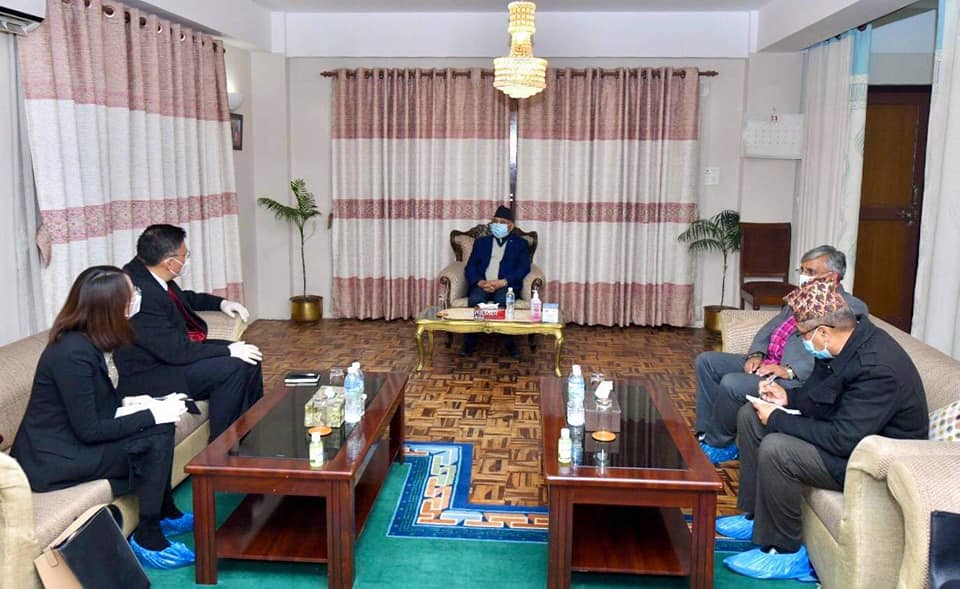

Dr Mahesh K Maskey
The author, former Ambassador of Nepal to China, is also a former Vice President of International Physicians for Prevention of Nuclear Warnews@myrepublica.com
If India, China and the US desire to have some show in Nepal, it is high time they learnt to be on the sideshows amicably.
In a recent article in The Tribune, former Indian foreign secretary and ex-ambassador to Nepal Shyam Saran has voiced his concern that “New Delhi is being on the sideshow” while political crisis unfolds in Nepal. It has come at a time when Nepal’s parliament has been dissolved by the unconstitutional move of Prime Minister K P Sharma Oli and a deep split has occurred in Nepal Communist Party (NCP). All major political parties and ‘Prachanda-Nepal’ faction of NCP as well as citizens are launching massive street demonstrations against the House dissolution.
Deliberating mainly on the implications of the visit of four-member Chinese delegation amidst this crisis, Saran candidly suggests that ‘US may have had a role to play in the crisis’, the ‘US-China power play’ is on display in Nepal, and India is being ‘marginalized’ in this whole show. He laments the diminishing influence of India, saying: “Indian and US interests in Nepal are not aligned if it is the US which is in the lead”. He recalls how in the past ‘India had worked together with the US and the UK as partners in Nepal but always with India in the lead’ and expresses his disquiet that ‘far from maintaining Indian influence in Nepal, we shall end up marginalized.’
For Nepali people, however, the narrative of marginalization of Indian influence is hardly tenable, if one only recalls several visits made by Indian intelligence, military, diplomatic and party leaders to Nepal in a span of a few weeks.
The MCC debate
The conjecture about the possible role of the US in igniting this crisis in connection with $500 Million Millennium Challenge Corporation (MCC) is noteworthy. There was an ultimatum to pass the bill in the winter session of parliament, but there was a strong opposition from within the ruling NCP and people at large. He suggests that the people who opposed MCC may be “acting on behalf of China” and posits a theory of US-China power play embedded in MCC.
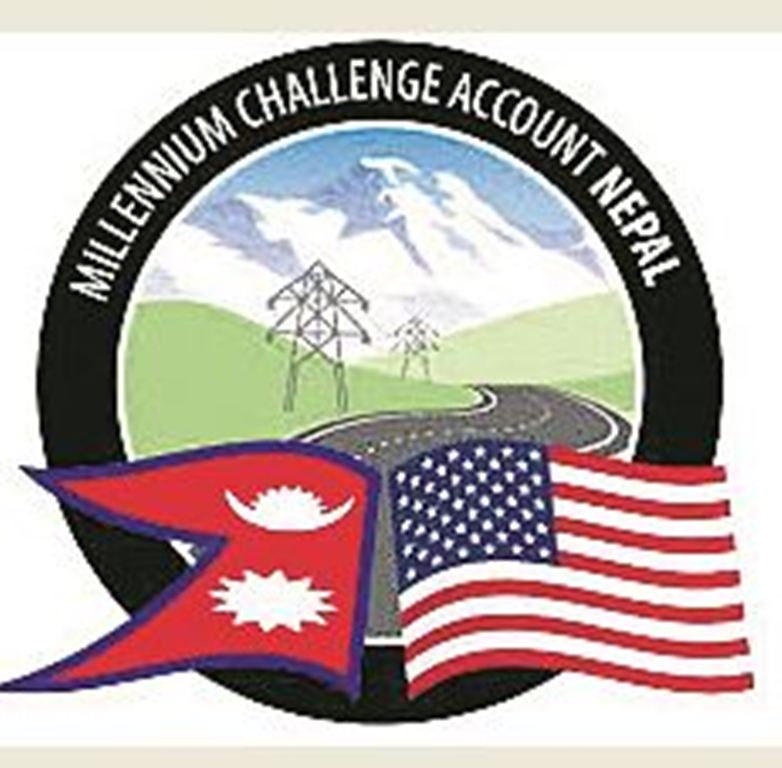
In Nepal it is a commonplace knowledge that parliament’s failure to pass MCC, or rather failure to even table it to the parliament by its protagonists, is because of such stiff opposition. Implicating China in Nepali people’s opposition to MCC, as is done by Sharan, exposes the same self-imposed mistaken beliefs, or deliberate twists, the stalwarts of Indian think tanks often fall victim to.
Such observations can perhaps be aptly described as a variant of ‘colorblindness’ inadvertently seeing “hand of China” everywhere. True, the conflict around the MCC is real, and the US has used all its pressure to push it through. But can’t the resistance against MCC be understood as Nepali people’s stand for their sovereign rights versus American interests?
If Indian scholars had cared to go through the points raised by the opponents of MCC, including that of the high level committee formed by the NCP, it would have been clear that as per MCC bill Nepal government’s rights to supervise, monitor and audit the project was at stake. Also MCC’s umbilical cord connected to the Indo-Pacific Strategy of the US was far too obvious. So the demand was to take those clauses out of the MCC bill and provide evidence of its dissociation from the Indo-Pacific Strategy. If there was a power play at all, it is between the American interests and Nepali people. To read it as US-China conflict only heightens the fear in India’s psyche of China’s increased manipulation and presence in Nepal.
Take another example. When Nepal claimed the map based on historical Sugauli Treaty, India did not hesitate to implicate China even though the whole parliament had unanimously endorsed it, voted in favor by all the political parties. One member who opposed it was expelled by her own party. Does India seriously believe that such unprecedented consensus in the history of parliamentary proceedings in Nepal is an act on behalf of China? One wonders when will India start seeing that Nepali people of the 21st century can speak their own mind and pressure the government and political parties to take stand on issue they see as right.
Let facts be facts
It would benefit India to look at the fact as it is. Once Nepal raised the border issue, the logical steps should have been diplomatic dialogue to examine amicably the evidence of competing claims of Nepal and India about their borders. But it is no secret that diplomatic requests for meeting made by Nepal was denied by India for a long time, and when a gesture of dialogue was made it was done by sending the chief of intelligence agency RAW as special envoy of Prime Minister Narendra Modi to meet with Prime Minister Oli. It was an act bound to hurt the sentiment of Nepali people, and it indeed did, while also taking away the fig leaf of “nationalistic rhetoric” of Oli. The damage was partially dressed by the visit of Foreign Secretary Harsh Vardhan Shringla. But the questions remain: Why was intelligence chief sent as special envoy to reopen the communication stalled by a diplomatic row? Why not the top diplomat?
The visit of recent Chinese delegation led by vice minister of CPC's International Department is facing some criticism in Nepal too. Nepal’s Foreign Ministry was apparently not informed of this visit. The irony is Pradeep Gyawali, a very important NCP leader, himself is the foreign minister of Nepal. But their meeting with top leaders of Nepal shows their times were booked beforehand. Such arrangements demonstrate a bizarre weakness of communication gap of Nepal Communist Party and Nepal government, even though such visit may have been arranged through party-to-party invitation or as special envoy of CPC leaders.
Sharan’s scores on objective of visit of four-member Chinese delegation, however, appear to be off the mark. From day one, Indian and some Nepali media also have speculated this visit to be a last ditch effort of China to patch up the NCP divide. The formula being restoration of parliament by rescinding the dissolution decision of PM Oli, and pressuring the other faction to unite again. Such news also claimed that these propositions have already been refused by PM Oli the same day. Media sources also had claimed earlier that the Chinese Ambassador to Nepal Hou Yanqi had suggested that Oli should step down in the spirit of unity, which made Oli furious and prompted him to take abrupt turn towards India and abandon China. The rest is history.
Sharan reiterates the same old speculation regarding Chinese visit “to revoke the dissolution of parliament” and presents a slightly modified new one “to accept a leadership change by bringing in a non-controversial political figure as Prime Minister.” Chinese must be much smarter than such speculation portrays. Here is why.
If such earlier speculation about ambassador Yanqi’s failed proposition is true it should be clear to China that Oli’s craving for power is much stronger and valuable than unity of his party or friendship with China. Why would they make the mistake of making another similar proposition, adding insult to injury at this stage, when there is hardly any chance of reconciliation between the two factions, apart from the very high probability of infuriating Oli again?
It is reasonable that they may wish for unity of the NCP because of their fraternal relations, but to present formula for unity that is bound to fail is hardly logical. They may have expressed serious concerns about the stability in Nepal because of their own security interests in relation of Tibet Autonomous Region. The US administration’s invitation of Central Tibet Administration’s President Lobsang Sangay to the White House and the passing of Tibetan Policy and Support Act 2020 by the senate two months ago is enough to ruffle the feathers of China. Add to that the recent US-India signing of BECA that will give India access to American geospatial intelligence data to enhance accuracy of its military weapons, and India’s consequential closeness to the Indo-Pacific Strategy.
Reality on the ground
Thus it is hardly logical that Chinese delegation would like to make their visit a failure by offering unpleasant propositions to PM Oli which has almost zero chance of acceptance, or by making an effort to glue the broken pieces of NCP which appears to be beyond any repair. What appears more plausible, as their meetings with different political leaders hint, is that they are here to get a firsthand assessment of the ground reality of present crisis in Nepal and get a feel of its varied courses, and gather hint for any possibility of correction. They had the occasion to observe the agitated street demonstration and sense the anger of the people. They also had the opportunity to extend a meaningful invitation to Nepali Congress President Sher Bahadur Deuba to visit China.
In my opinion, their visit is aimed at adjusting China’s Nepal policy in this fast changing political scenario and its possible outcomes. There are three main possible outcomes of this political crisis. One, either by the verdict of Supreme Court or by the force of opposition street movements, the decision to dissolve the parliament may be revoked. In that case, what kind of alliances in the restored parliament are likely to be formed to form a new government and under which party’s leadership?
Two, Supreme Court decides in favor of House dissolution and election happens on time. What kind of alliances are likely to be formed in that scenario in the election front? Three, Supreme Court does not give a clear cut verdict and lingers on, the opposition movement continues but repressed by imposing emergency by this government and election does not happen on time. What needs to be done in such a situation?
These are the same vexing questions for India as well as the US. Nepal is indeed in a serious political crisis, unprecedented in the sense that Nepal’s new constitution does not allow a prime minister of a majority government neither to dissolve the parliament nor to reshuffle the cabinet in the absence of parliament. A hasty step by India may be counter-productive. In this sense, Sharan’s write-up of caution is an informative window to the mind of a keen observer on Nepal affair as well as to India’s differing mindsets. His remarks in favor of democratic principles such as ‘extension of support to Oli or to encourage an apparently ‘right wing coalition’ to supplant the NCP, even if this means derailing Nepal’s democracy, would prove to be extremely short-sighted.” This appears to be directed at the Indian foreign policy veterans themselves.
All the three countries—India, China and the US—are good friends of Nepal and Nepal’s foreign policy aspires to maintain 'friendship with all and enmity with none.' Therefore, it is best to leave it to Nepali people to run the main and side stages for deciding their political fate by themselves. Sharan states that economic, cultural and technological co-operations are the best guarantee of enduring friendship for India and Nepal. This is also true for Nepal’s friendship with China and the US. If these friendly countries do desire to have some show, it is high time they learnt to be on the sideshows amicably. And I may add, if there must be sideshows, let upholding Nepal’s constitution and defending democracy be the content of such friendly sideshows.
You May Like This
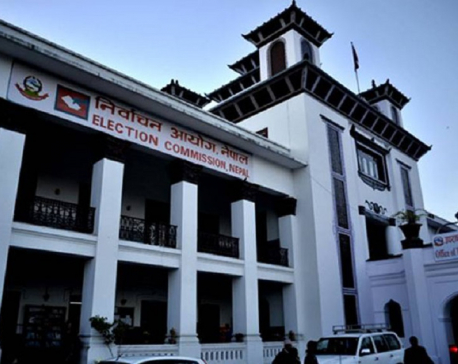
Dahal-Nepal faction of ruling NCP asks EC to defer discussion on election preparations by a few days
KATHMANDU, Jan 29: Leaders of the Dahal-Nepal faction of the ruling Nepal Communist Party have asked the Election Commission (EC)... Read More...
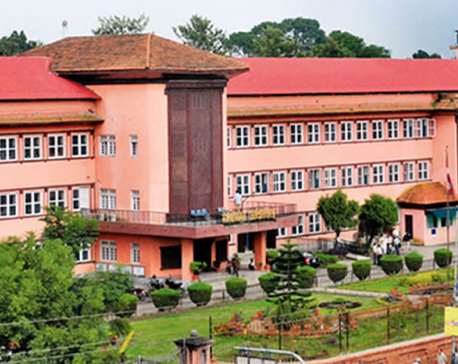
Hearing on House of Representatives dissolution case continues
KATHMANDU, Jan 15: Hearing on the case of dissolution of the House of Representatives (HoR) is being continued on Friday... Read More...
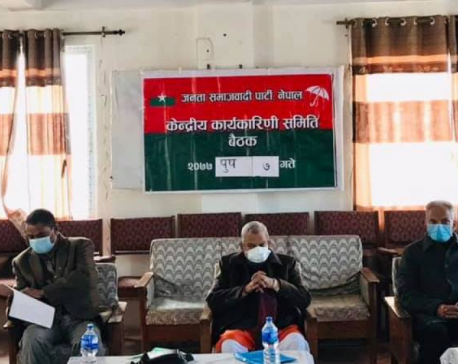
Janata Samajbadi Party staging nation-wide protest against House dissolution
KATHMANDU, Dec 26: Janata Samajbadi Party (JSP) is staging a nation-wide protest against the dissolution of parliament by Prime Minister... Read More...







Just In
- NRB to provide collateral-free loans to foreign employment seekers
- NEB to publish Grade 12 results next week
- Body handover begins; Relatives remain dissatisfied with insurance, compensation amount
- NC defers its plan to join Koshi govt
- NRB to review microfinance loan interest rate
- 134 dead in floods and landslides since onset of monsoon this year
- Mahakali Irrigation Project sees only 22 percent physical progress in 18 years
- Singapore now holds world's most powerful passport; Nepal stays at 98th











Leave A Comment